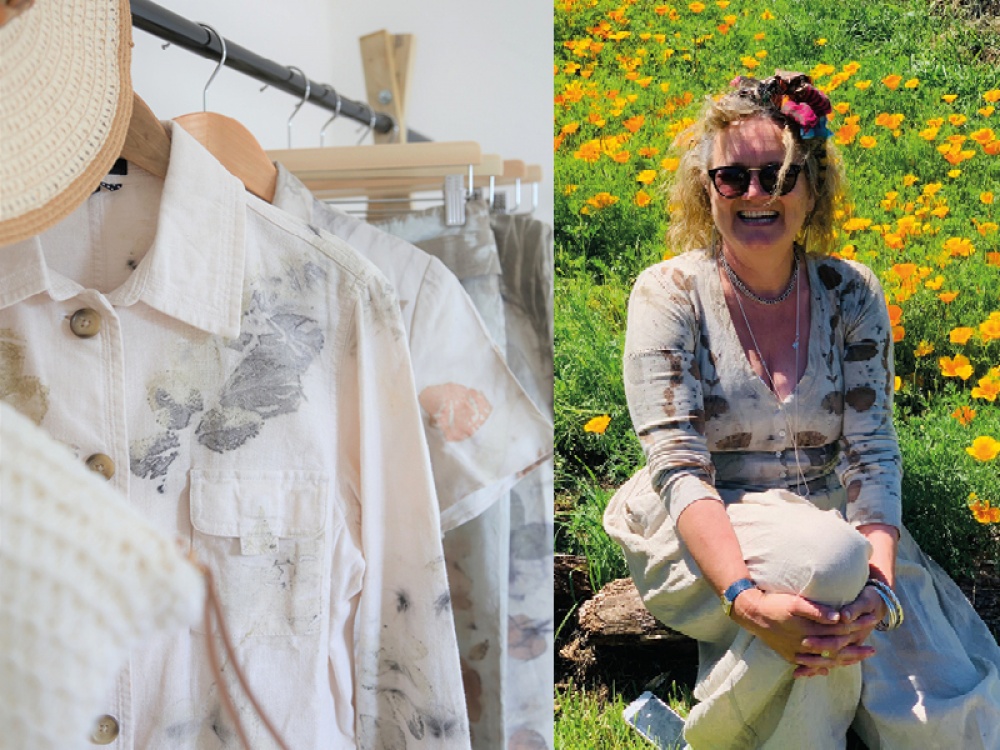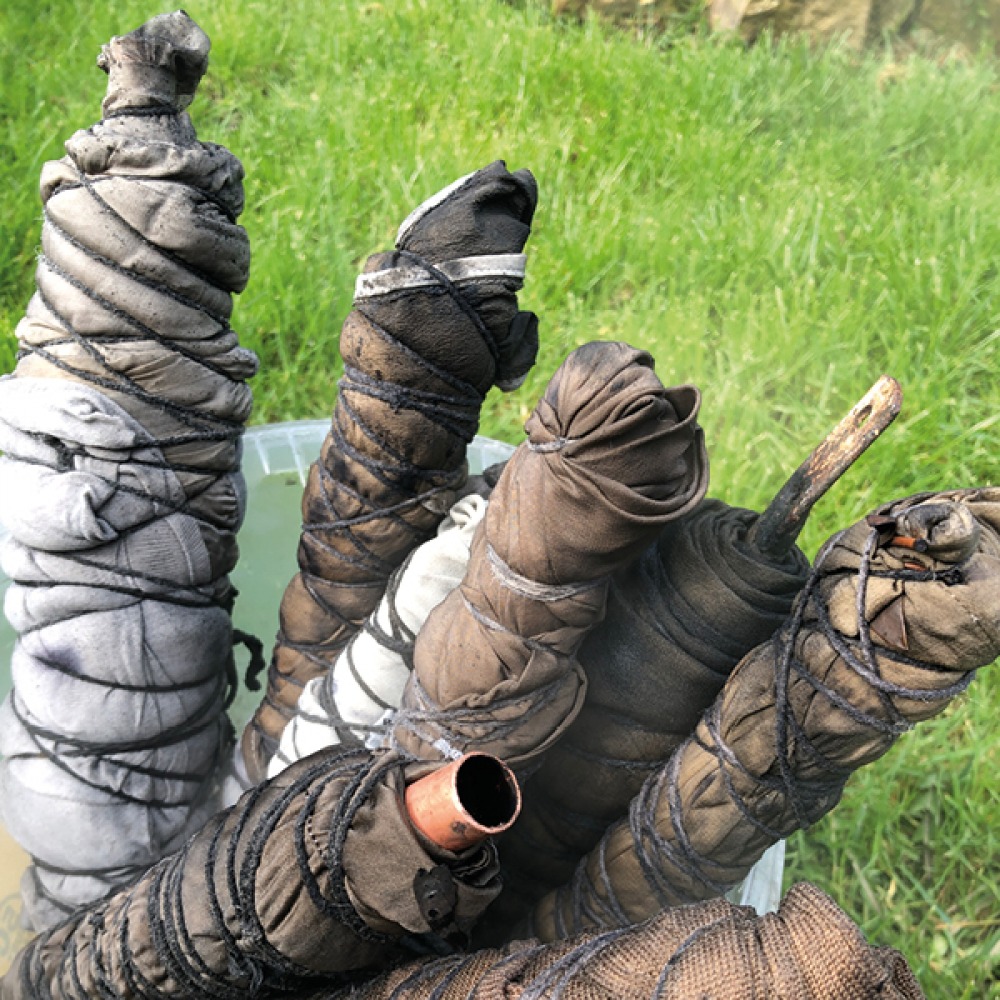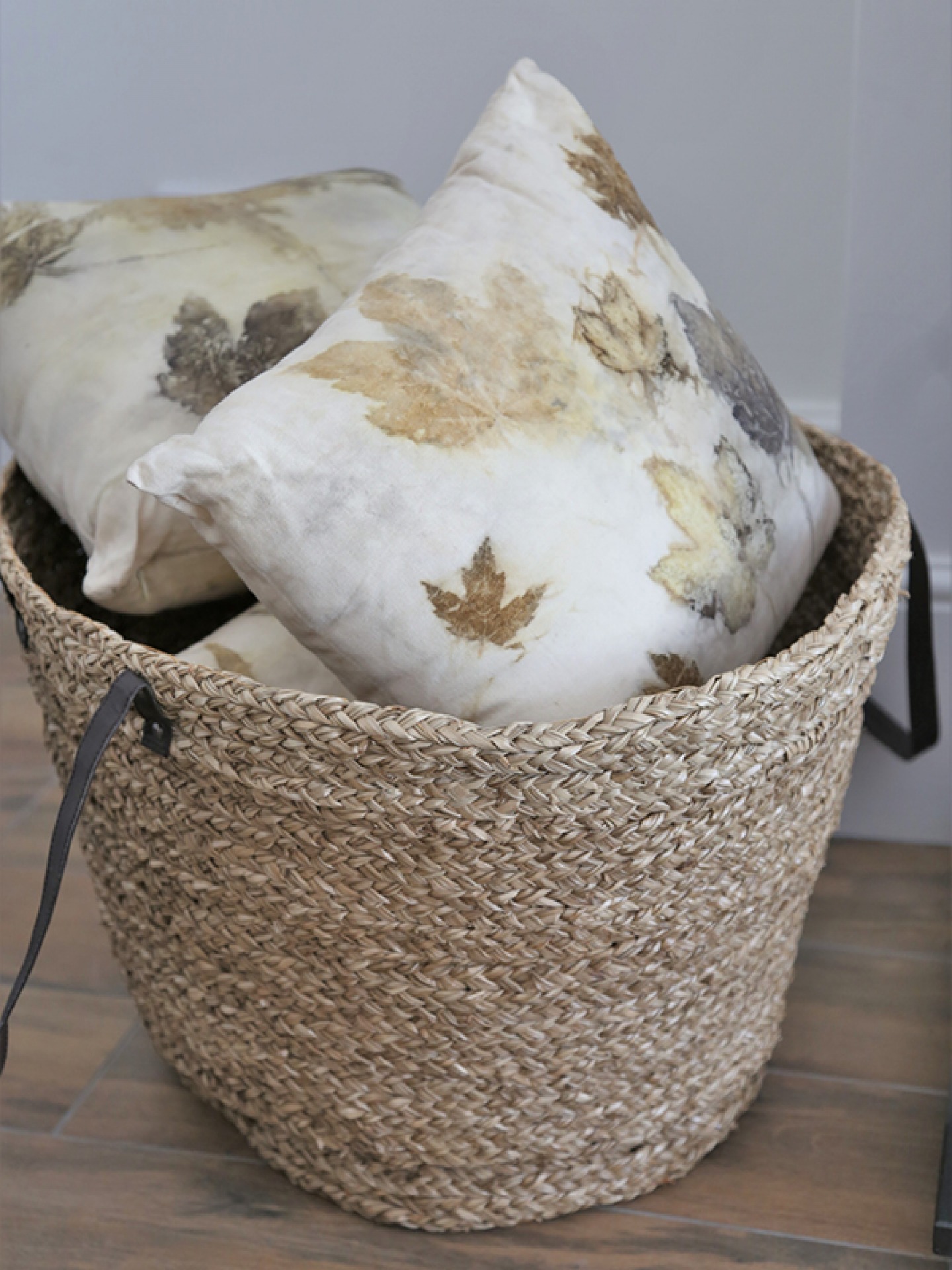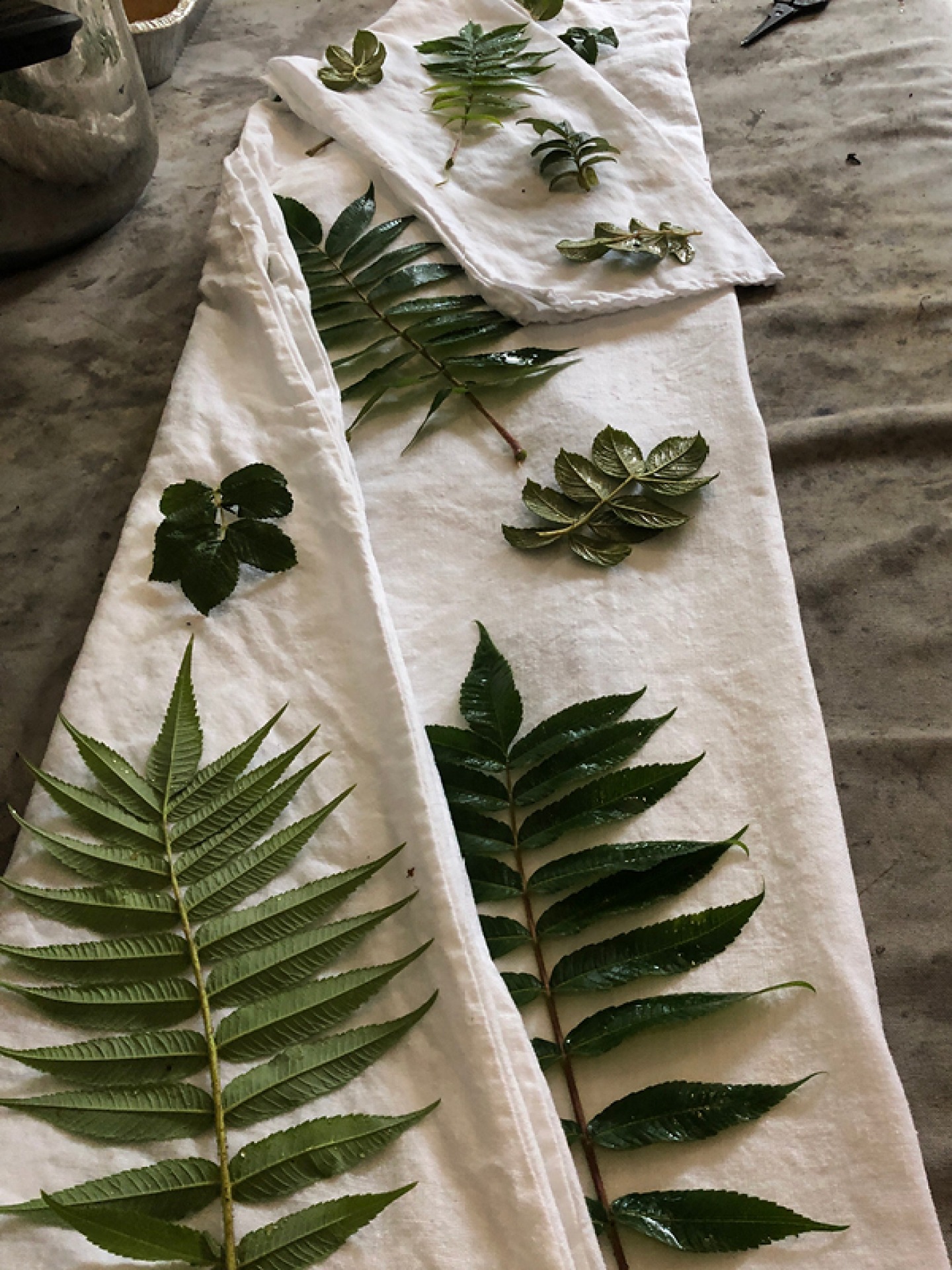Meet the Eco Printer from County Durham Who Transforms Secondhand Clothes Sustainably

Ahead of April's Earth Day, we chat to Brancepeth-based eco printer Gillian Smellie, who uses materials foraged from nature to transform secondhand clothes
‘I don’t come from an arts background at all,’ Gillian says. But she’s always been a forager, of both hedgerows and of secondhand shops. ‘I turn 60 this year, and I certainly didn’t expect to be starting a business in my late 50s; it wasn’t part of the plan – I’m a classic lockdown business. I’ve always been interested in plants, but not gardening, and I’ve toyed with training as a clinical medicinal herbalist. At the same time, I’ve always knitted, sewn and spun and had an interest in textiles.
‘I’d done a one-day course in eco printing a few years ago and purely by chance, during lockdown, I picked up a book by India Flint which was on my bookshelf and thought I might have another go at it. India is a guru of eco printing. I wouldn’t have been able to afford to go on one of her courses but during lockdown she went online and did the most amazing courses which were actually affordable. So I spent lockdown doing lots of courses with her, and really enjoyed it. One of my daughters asked “mum, why don’t you sell this?”, I suspect, actually, not because she thought my work was brilliant but because it was starting to take over the house!,’ Gillian laughs. ‘I live in Brancepeth and we’re very fortunate to have a craft fair every year which I managed to get a stall at. I had three weeks to get my business put together, and that’s how it all started.’

If you Google eco printing, the concept can be quite confusing. ‘You get an awful lot of people printing T-shirts saying they print them with environmentally-friendly inks,’ Gillian says. ‘Eco printing is essentially a contact print. The print is created by whatever comes in contact with the fabric. In this case there is nothing added, it’s just the chemicals (predominantly tannins) in the leaf, which when placed against the fabric, bundled up very tightly, and boiled or steamed, creates the print. Because it’s bundled so tightly, there’s nowhere else for them to go except for onto the fabric. Different leaves will give you better prints than others, you can add salts to your leaves or your boiling water and natural dyes to play around with the results.’
Read More: Meet The Young Entrepreneur Behind Leeds' Upcycled Fashion Brand TOM-O
The inspiration for Gillian’s prints relies a lot on the materials she has available, many of which come from the trees and plants in her own garden and the fields and woods around her in rural County Durham. ‘At the moment, I’m very limited on what I can use, so as well as leaves I’m using other materials such as eucalyptus bark and onion skins because they both release a lovely dye,’ she reveals. ‘I get a nice mottled effect with tea leaves as well. I have to dry all of my other leaves (some people freeze them) – oak, sycamore, maple, rose – which are made soft and pliable by the water. At this time of year I’m limited to what I’ve salvaged, so my work will be defined by what’s available. In the spring, summer and even right up to autumn I can be a lot more flexible.
‘If a leaf isn’t going to work in terms of printing but I like its shape, I’ll use it for a relief print. You don’t get very good prints from ginkgo leaves but they’re beautifully shaped so I put the leaf down and cover it with another piece of fabric soaked in a dye and I’ll get a reverse relief print.’
The materials Gillian uses to print onto, with a few exceptions, are secondhand, and she calls her pieces wearable art. ‘I get them from well-known online secondhand suppliers; eBay, Vinted and charity shops for example,’ she says. ‘I stick to mostly silk, wool and cashmere because you get better prints from protein fibres than you do from cellulose fibres (linen, cotton and hemp). I do print on those, but not as much – you have to work much harder.
‘Sometimes I’m simply inspired by an item of clothing. I found a huge cashmere V-neck cardigan and the V was very deep, almost down to the tummy button – that lent itself beautifully to eucalyptus nicholii (which are long pointy leaves) down the neck so it looks like you’re wearing a necklace.’
'I’m trying to make the businessas circular as possible
so nothingwill ever actually go to landfill'



As well as making sure her business is as sustainable as possible, it was important for Gillian to make people look at secondhand fashion differently. ‘I want to make secondhand clothes luxurious,’ she says. ‘What’s more, I’m working on a new idea called Revolution. I’m trying to make the business as circular as possible so nothing will ever actually go to landfill. The idea is if you buy an item of clothing from me and then it comes to the end of its life or develops a hole that you can’t repair, or you simply just don’t want it anymore, you can send a photograph to me and I’ll grade it A, B or C based on its repair. I’ll give you a voucher as a discount against a new purchase, then I’ll either wash the fabric and reprint it, repair and reprint it, or I’ll strip it down and use the zips, buttons and fabric to create something new. For any fabric that can’t be used, I’ll strip it down to rags and make bunting and wreaths to sell. The idea is that nothing in that item of clothing will go to waste.’
Also launching later in the year are her workshops, as Gillian is keen to pass on her knowledge to encourage others to be more sustainable. The workshops will initially be based in various locations around the North East. ‘The idea is to give people enough hands-on experience and knowledge to go away and practice eco printing themselves and develop their own work, but to have fun at the same time,’ she says. ‘We’ll do printing on paper, then printing on a silk scarf which they can take away.’
Gillian has now been shortlisted in the Sole to Sole category at this year’s Small Awards. Now in its 17th year, The Small Awards celebrate small companies from across all sectors. Her business is one of just eight finalists nominated for best self-employed small business owner.
Your favourite place to walk in North East?
Druridge Bay.
An item you couldn’t live without.
There’s a photo in my wallet of my husband taken maybe 30 years ago. He had just, for the first and possibly the last time, put a duvet cover on a duvet and he’s standing there super proud of himself. That’s been in my wallet for 30 years!
A book, podcast or series you recommend.
A book I’ve read over and over again and will continue to read is The Poisonwood Bible by Barbara Kingsolver. I listen to quite a few podcasts; I absolutely loved (and wish there were more episodes of) The Lovecraft Investigations on BBC Sounds. I listened to that all the way through twice in lockdown.
Advice you’d give your younger self.
Don’t worry about what other people think.
As Earth Day is approaching, what tips would you give our readers to be more sustainable?
In terms of fashion, shop your wardrobe. It’s the same as shopping your pantry when you plan your meals. If your wardrobe is really full, you’ll end up wearing the same things all the time. Take half of it out and just look at the half you’ve got left, then play around. I probably dressed better in lockdown than I did normally because I had time to experiment. It’s the same with everything in our houses; you actually won’t use half of it. You don’t have to give it all away to charity tomorrow but take half (or even just 10 percent for a start) away and take a real look at what you’ve got. Someone once said to me, look at the space in your house rather than your stuff. If you don’t have much space, then you’ve got too much stuff.







